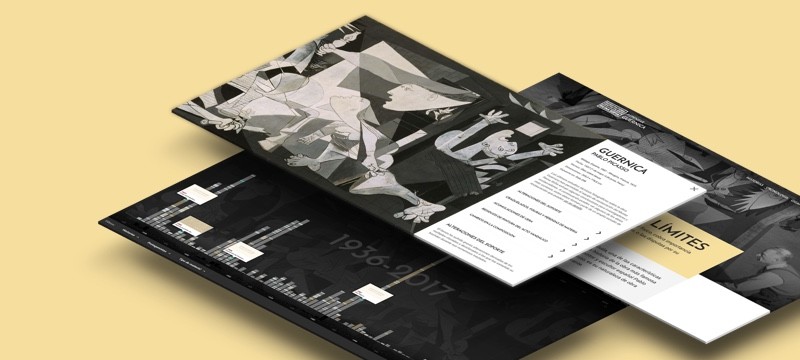Picasso’s Studio, 7 rue Grands Augustins, Paris
Pablo Picasso occupied his studio on the Rue des Grands-Augustins in Paris from the end of 1936 until 1955. The studio was the scene of Guernica’s creation, and the place where Dora Maar photographed its creative progress, as well as the drawings and paintings related to it. After the Second World War, Picasso would spend the majority of his time in the south of France, only using the studio during his sojourns in the French capital. It was also the same building and studio in which Honoré de Balzac placed the painter Frenhofer, the main character in his novel The Unknown Masterpiece (1831), thus creating a special aura around the space and work of Picasso and his pursuit of the idea of beauty.
Before renting, with the intervention and help of Dora Maar, two floors on the fifteenth-century building, known as the Hôtel de Savoie, and becoming ensconced in the space in which Balzac’s tale unfolds, Picasso had, in 1931, made a series of etchings to illustrate The Unknown Masterpiece, a commission by Ambroise Vollard. In the winter of 1936, Picasso set up his new studio to be, finding resemblances to Bateau-Lavoir, his first house-studio in Paris.
Following the Republic Government’s commission for the Spanish Pavilion at the Paris World’s Fair of 1937, the studio would become the scene of Guernica’s conception and creation. In the weeks the artist worked on the great canvas, he received visits from friends and politicians, of which there remains a photographic record of André Breton’s and Jacqueline Lamba’s visits, and the series taken by Maar, the images of which are characterised in part by the dim lighting in the studio, depicting not only the compositional changes on the canvas but also the space-related dimensions.
After a stay in Royan in 1939, Picasso remained in the French capital during the Second World War and the German occupation of the city, and records bear witness to the large number of visitors he received in his studio on the Rue des Grands-Augustins during that period: artists, reporters, military officers, and even the German ambassador in Paris. Despite the circumstances, Picasso worked unceasingly, amassing in his studio paintings and sculptures produced over that stretch of time, alongside previous works and work by other artists, as demonstrated in the shots taken by Brassaï, Lee Miller and Herbert List in 1944. From that time on the studio has remained inextricably linked to Picasso — in 2004 the tapestries made from Guernica were exhibited inside it. After years of attempted arrangements and controversy – plans were submitted to turn the building into a hotel — and with the participation of his daughter Maya, the studio is currently used for artistic purposes and research related to the artist.


![Weeping Woman [II] Weeping Woman [II]](/sites/default/files/styles/medium/public/documento/GUE-1959_0.jpg?itok=Yd6PJC9E)

![Study for the Horse Head [II]. Sketch for Guernica Study for the Horse Head [II]. Sketch for Guernica](/sites/default/files/styles/medium/public/documento/GUE-1911.jpg?itok=3oSWeXbx)